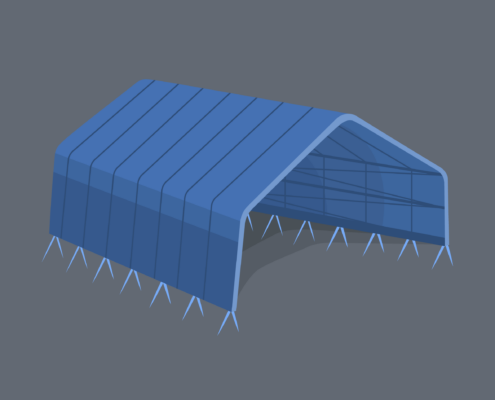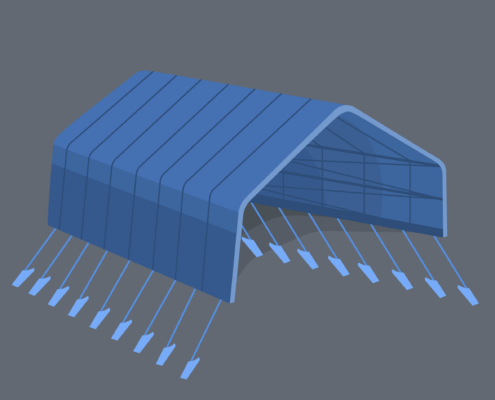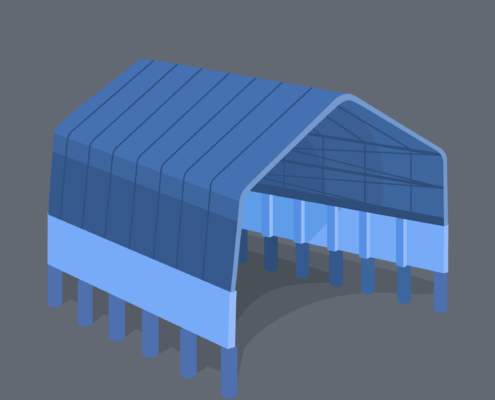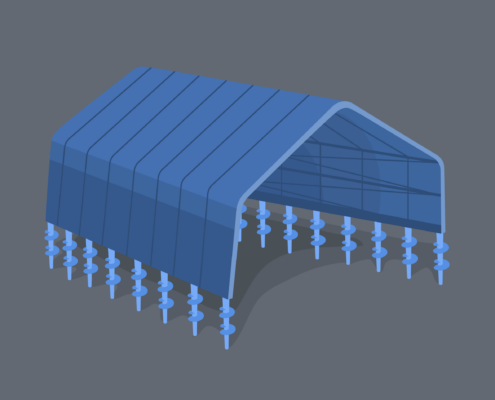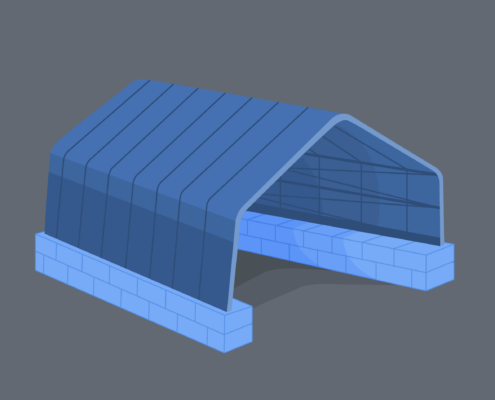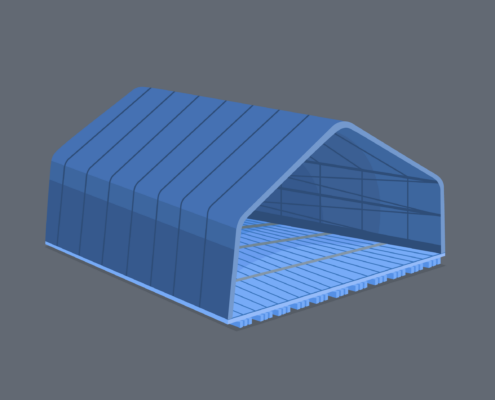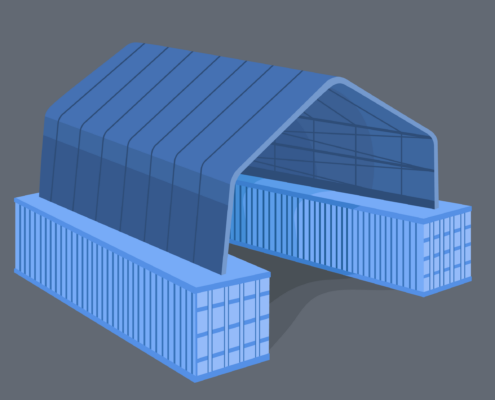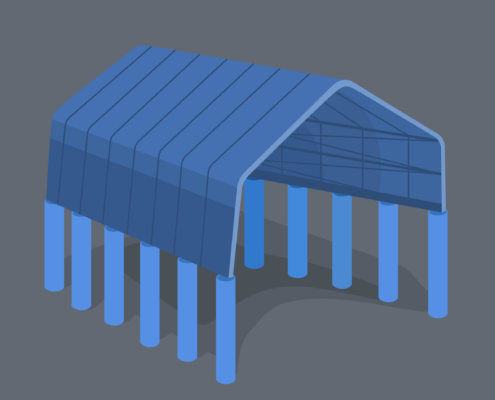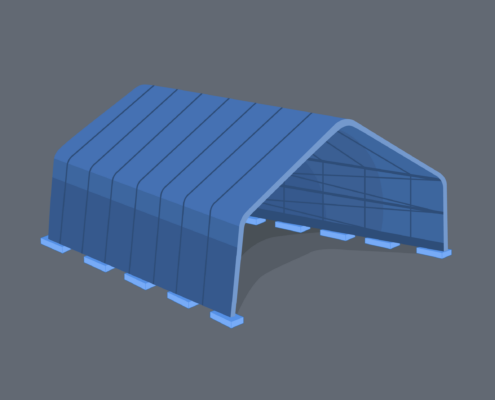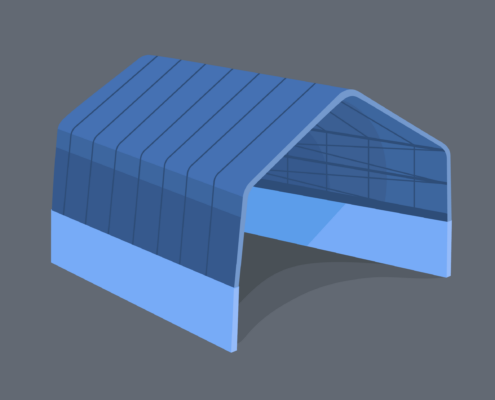The Ultimate Guide to Foundation Systems for Fabric Buildings: Tailored Solutions for Every Project
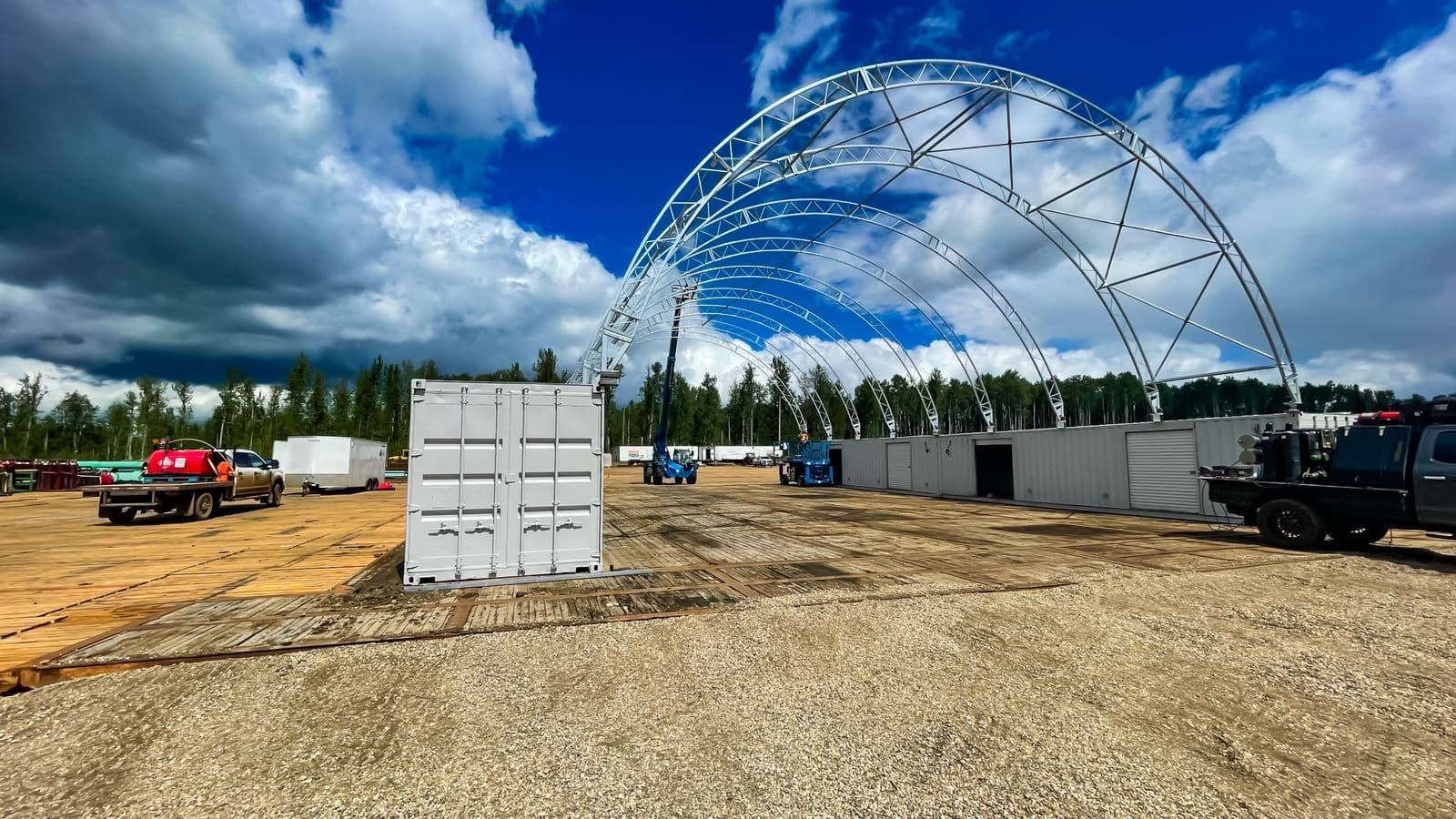
For contractors exploring fabric building solutions, understanding the array of foundation options available is key to maximizing the practicality, efficiency, and profitability of your projects. After all, the foundation of your project is as crucial as the structure itself.
At Edge Inc., we understand the need for innovative foundation solutions that cater to the specific requirements of fabric structures. That’s why we offer a diverse range of options that, regardless of your project’s scale, location, or duration, is perfectly matched to meet your needs.
Read on to discover the different options available based on the scale and specifics of your project.
Temporary vs. Permanent Foundations: A Brief Overview
Before diving into the specifics, it’s important to consider whether your project would benefit from a temporary or permanent foundation system.
Temporary Foundation Systems
Designed for quick assembly and easy removal, temporary foundations, such as Hogan Stakes, Duckbill Earth Anchors and Rig Mats, are ideal for projects where fabric buildings need to be relocated. These options are environmentally friendly, require minimal ground disturbance, and are cost-effective, making them suitable for a wide range of applications.
Permanent Foundation Systems
On the other hand, permanent foundations like Concrete Piers and Poured Concrete Walls, are built to last, offering unparalleled stability and longevity for structures intended to remain in place for decades. These foundations are typically more complex to install but provide a solid base for critical infrastructure such as airplane hangars, storage facilities, and recycling plants.
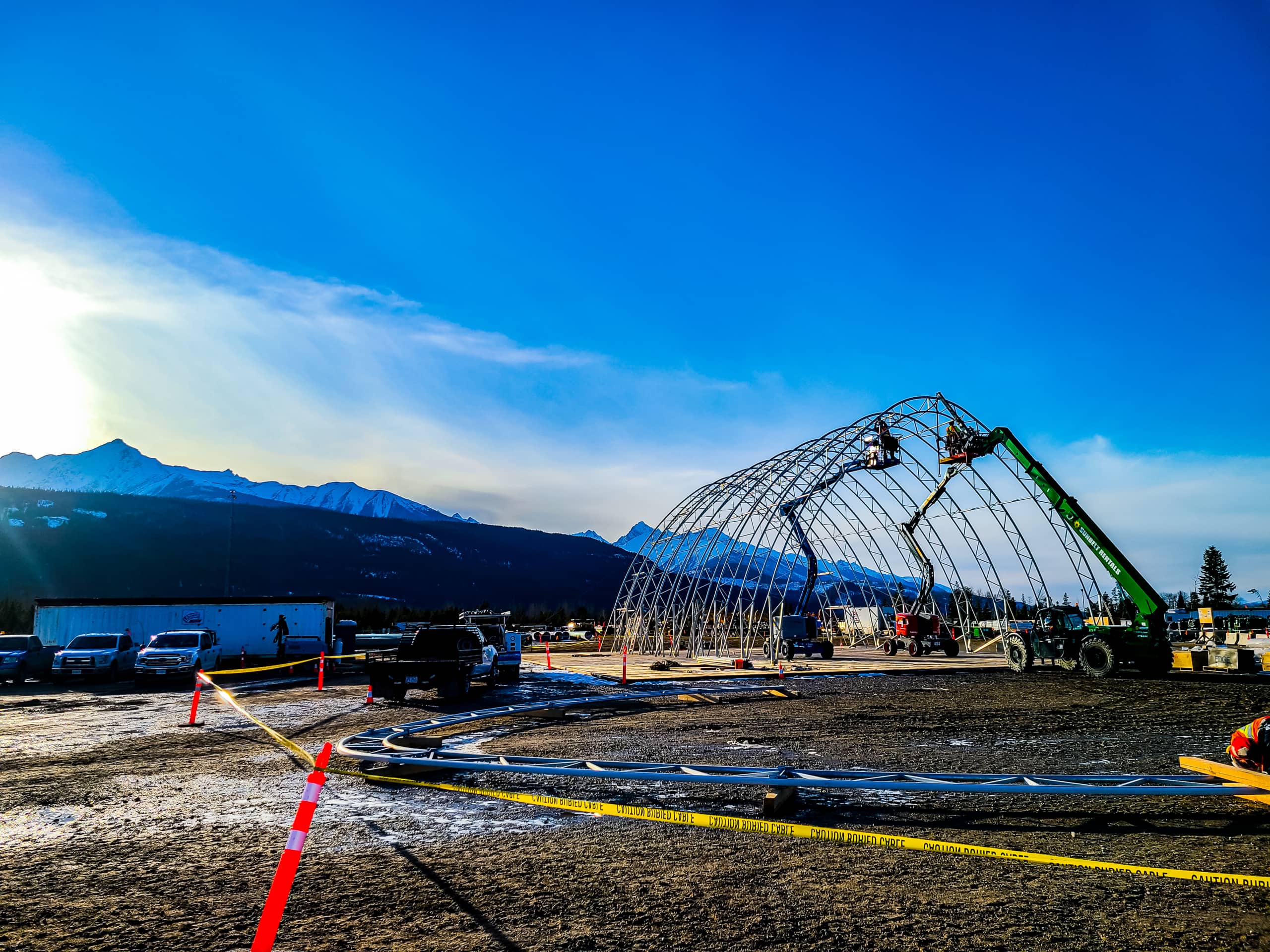
Which fabric structure foundation system is best for my project?
Navigating the multitude of fabric structure foundation options can be a headache, particularly when managing a project under tight timelines alongside numerous other responsibilities.
To make it simple for you, we’ve outlined the 10 foundation systems we offer at Edge Inc, complete with expert insights to help you select the most suitable, cost-effective, and durable solution for your project.
1. Hogan Stakes
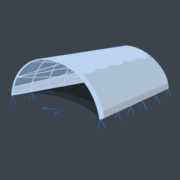
For contractors seeking a cost-effective and easy-to-install solution, Hogan stakes offer unparalleled simplicity. Ideal for smaller, temporary fabric buildings, these high-tensile steel stakes can penetrate hard surfaces without bending. Installation is straightforward, requiring only a sledgehammer or jackhammer, and removal is just as easy, making Hogan stakes a practical choice for projects on the move.
Best for: Temporary structures and small-scale construction shelters.
2. Duckbill Earth Anchors
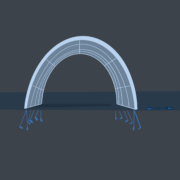
Duckbill Earth Anchors present an environmentally friendly foundation option that’s both lightweight and cost-effective. Suitable for securing smaller, temporary structures, these aluminum alloy anchors can be installed with hand tools or portable power equipment, eliminating the need for digging or cement. Once in place, Duckbill anchors lock securely into the soil, providing a sturdy base with minimal environmental impact.
Best for: Temporary structures prioritizing environmental stewardship.
3. Wooden Posts
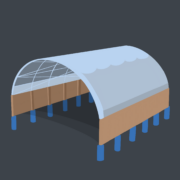 In the agricultural sector, wooden posts are a go-to foundation for their simplicity and effectiveness. Commonly used for longer-term installations, wooden posts are treated for durability and installed with a mix of concrete and gravel for secure anchoring. This method offers a reliable foundation with minimal equipment requirements.
In the agricultural sector, wooden posts are a go-to foundation for their simplicity and effectiveness. Commonly used for longer-term installations, wooden posts are treated for durability and installed with a mix of concrete and gravel for secure anchoring. This method offers a reliable foundation with minimal equipment requirements.
Best for: Permanent-to-semi-permanent structures and agricultural facilities like riding arenas and hay storage buildings.
4. Helical/Screw Piles
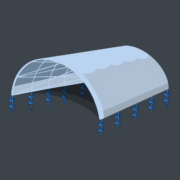
Helical piles (or screw piles) are an efficient and reliable foundation choice. Installed using machinery such as hydraulic drive motors and excavators, helical piles can be drilled into the ground quickly, providing a sturdy base even in poor soil conditions. This method is cost-effective and minimally invasive to the environment, suitable for both permanent and temporary buildings.
Best for: Medium to large structures in areas with challenging soil conditions.
5. Concrete Lego Blocks
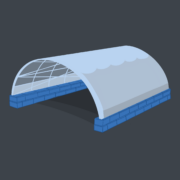 Interlocking concrete blocks are gaining popularity for their durability and ease of relocation. These blocks require heavy lifting equipment for installation but offer a low-maintenance and sustainable foundation option for small to medium-sized structures across various industries. Their modular nature allows for easy reconfiguration or relocation, making them ideal for temporary and permanent projects alike.
Interlocking concrete blocks are gaining popularity for their durability and ease of relocation. These blocks require heavy lifting equipment for installation but offer a low-maintenance and sustainable foundation option for small to medium-sized structures across various industries. Their modular nature allows for easy reconfiguration or relocation, making them ideal for temporary and permanent projects alike.
Best for: Mining, bulk storage, oil and gas, construction, and waste management facilities needing flexible foundation solutions.
6. Rig Mats
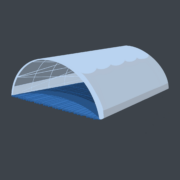
Particularly prevalent in the oil, gas, and construction industries, rig mats offer a robust foundation solution that’s quick to install and requires minimal setup resources. Placed directly on the ground, they are perfect for environmentally sensitive or challenging terrains, supporting temporary structures with ease.
Best for: Sites in environmentally sensitive areas, with rough or muddy terrain.
7. Sea-Can Containers
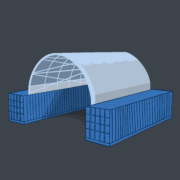
Utilizing sea-can containers as a foundation not only embraces eco-friendliness but also adds extra dry storage space that is fully sealed from outside elements and rodents. These containers are versatile for small to medium buildings, requiring no digging for installation and serving both temporary and permanent needs effectively.
Best for: Small to medium, sustainably driven projects with a need for additional storage space.
8. Concrete Piers
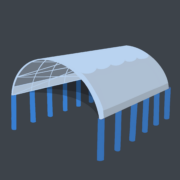
Concrete piers provide a robust foundation solution for permanent fabric building structures. By using vertical pillars or piles, this system expertly transfers the load of the structure to the soil, ensuring stability even in unstable ground conditions. It’s an excellent choice for areas with intricate root systems or uneven terrain, where securing a solid foundation is paramount.
Best for: Permanent structures in complex terrain, like forested areas or uneven landscapes.
9. Concrete Grade Beam
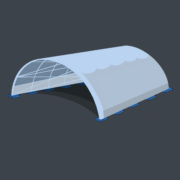
Typically utilized for medium to large fabric buildings, this method utilizes the concrete grade beam as a key foundation component, creating a horizontal connection between pile caps and footings to effectively spread the building’s weight to the ground. This ensures your fabric building remains anchored at a consistent height above the soil. The grade beam foundation demands considerable effort and resources but delivers a solid, enduring base that’s well worth the investment.
Best for: Permanent structures requiring a seamless, ground-level integration.
10. Poured Concrete Wall
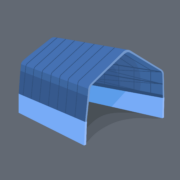
Offering exceptional strength and low maintenance, poured concrete walls are ideal for permanent fabric structures that require resilience against erosion, extreme weather, and fire. This foundation type allows for customization in building height and is suited for small to large projects, though it demands significant labor and resources for installation.
Best for: Permanent fabric structures in environments likely to be exposed to extreme weather conditions.
Partnering with Edge Inc. for Your Foundation Needs
Choosing the right foundation for your fabric building is a critical decision that impacts the success and longevity of your project. At Edge Inc., we’re dedicated to working collaboratively with contractors to identify and implement the most efficient, cost-effective foundation solutions.
Our expertise in advancing technology, materials, and techniques ensures that your fabric structures are supported by foundations that maximize benefits in terms of practicality, efficiency, and profitability.
Contact us today for more detailed information on our foundation systems or to explore how we can support your next fabric building project.

